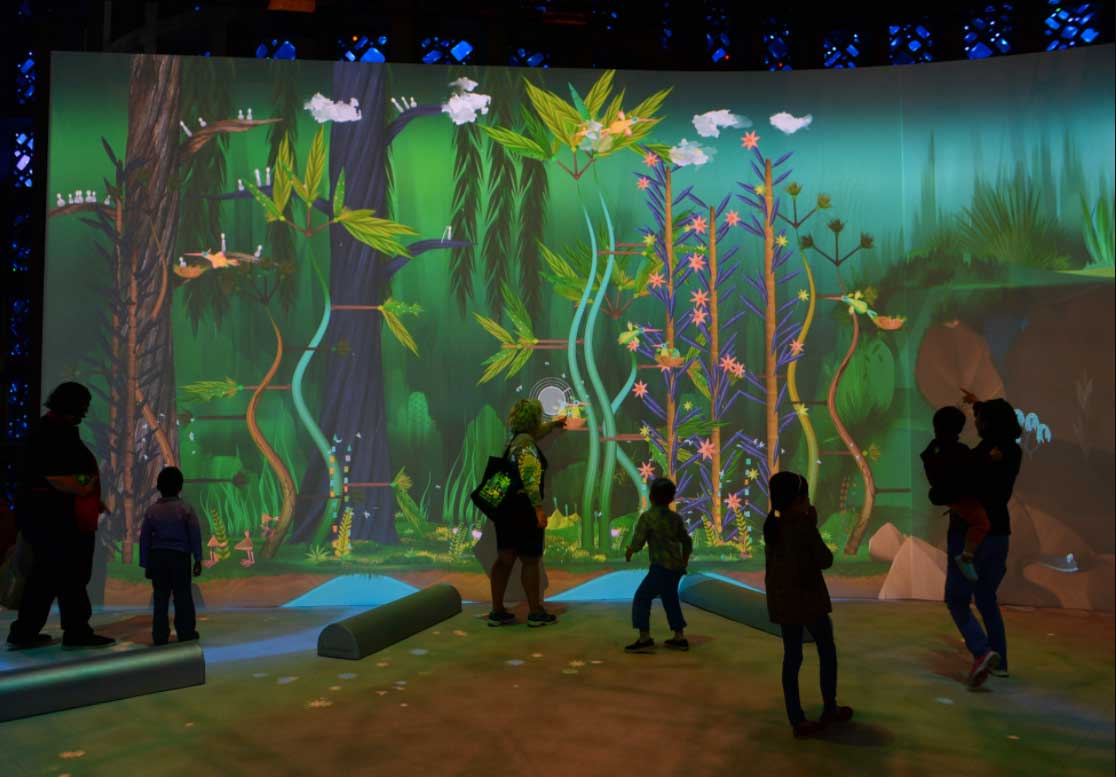 Location: Ballroom C+D+E
Location: Ballroom C+D+E
This is a roundtable in the Cyberlearning 2017 Roundtable session.
How Can we Use Logs to Support Discussion of Simulation Results?
Andee Rubin

I am working with the New York Hall of Science, which has a large immersive exhibit-simulation called Connected Worlds, which represents 4 interconnected biomes. The biomes are connected through water sources, all of which are fed by a large central waterfall. As many as 50 students can participate in the simulation at once, planting or chopping down plants and moving water among the biomes by placing “logs” strategically on the floor. The pedagogical goal of the experience is for participants to notice certain characteristics of complex system behavior, such as the fact that causes and effects can be removed from one another in time, space or both. Yet a single person’s experience is often limited in both time and space, so it is hard for participants to see the “bigger picture.” We are investigating ways of using the digital logs that result from simulation runs to automatically create a “recap” of what happened, providing students with a common artifact they can discuss and reflect on.
Project: Homepage, NSF Award #1623091 ESSIL: Extracting Salient Scenarios from Interaction Logs
EMBRACE: Applying Embodied Cognition, Bilingual Instruction, and Cognitive Tutor Principles to Reading Comprehension
Erin Walker

Reading comprehension is a critical skill, and one where dual language learners can fall behind compared to native English speakers. Over several iterations, we have developed EMBRACE, an intelligent tutoring system designed to improve English reading comprehension of young children who are native Spanish speakers. EMBRACE, based on theories of embodied cognition and bilingual instruction, tutors children on how to create cognitive simulations of text content, and provides children with Spanish-language in addition to English-language support. In the round table presentation, I will discuss the theoretical foundations of EMBRACE, demonstrate its functionality, and describe research evaluating its effectiveness. EMBRACE is a novel and promising demonstration of the application of cognitive tutor principles to the development of an educational technology for reading comprehension.
Project: Homepage, NSF Award #1324807 – DIP: EMBRACEing English Language Learners with Technology
